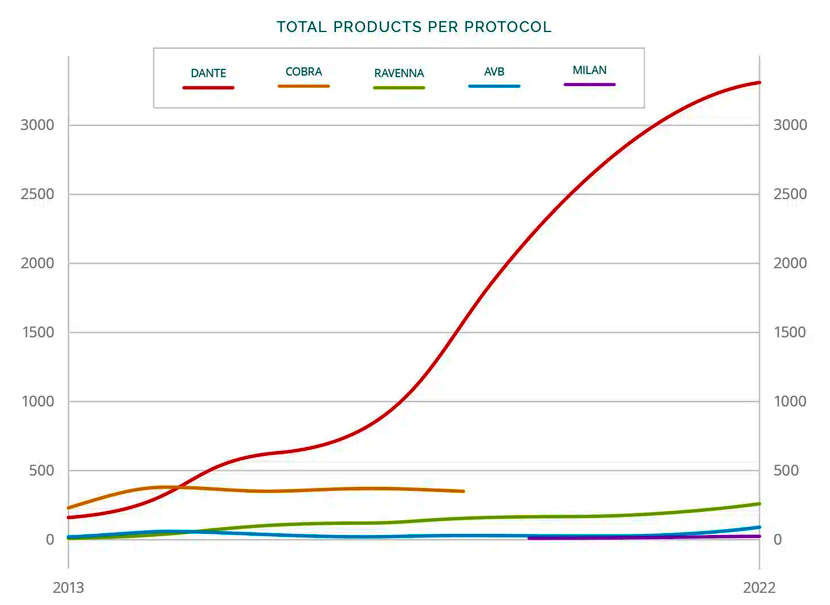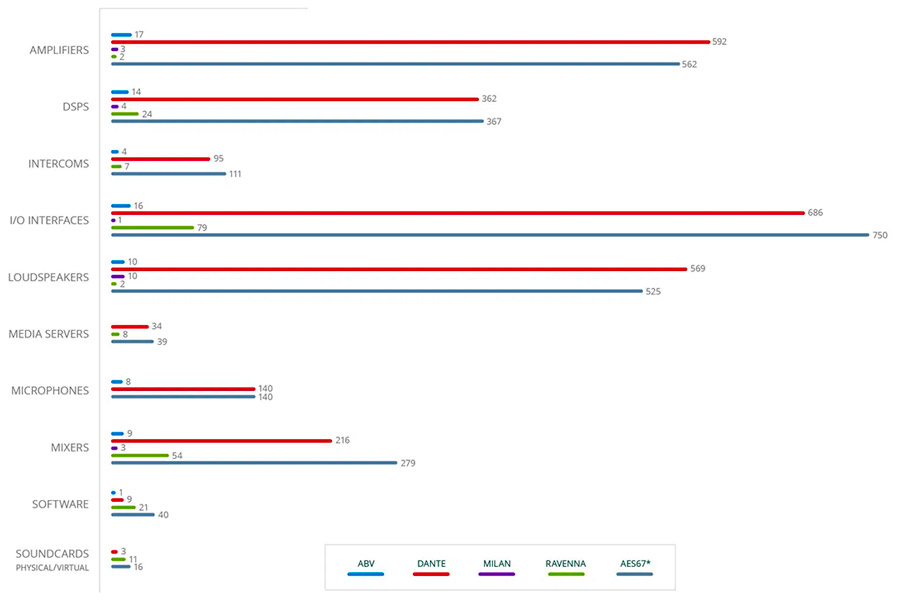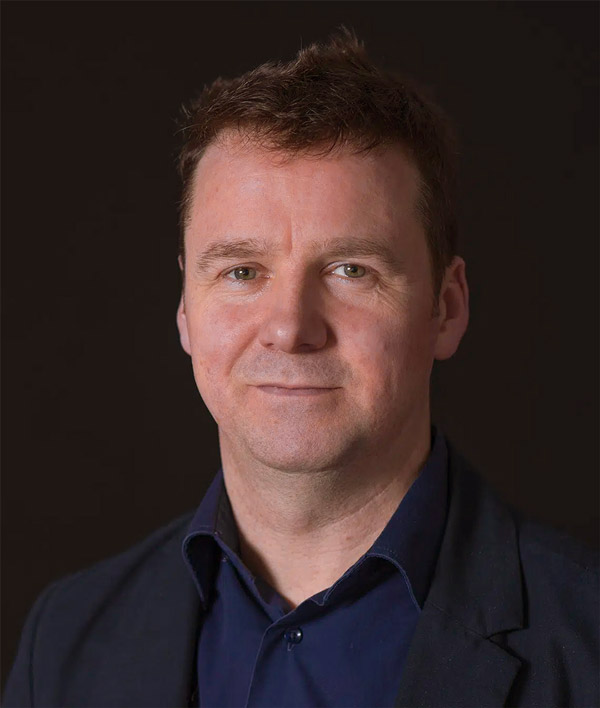RH Consulting releases 10th edition of annual report on adoption of networked audio, covering all the major protocols. This year, for the first time, the report has broadened its scope to include networked video and control products.
Audio consultancy and networking experts RH Consulting have been counting networked audio products and licensees since 2013 in an effort to chart the adoption of audio networking in the pro audio, AV and broadcast markets.
Universally recognised as the benchmark for tracking trends in networked audio, the report covers all the major protocols including Dante, RAVENNA, AES67, AVB, Milan and others. This year, for the first time, the report has broadened its scope to include networked video and control products using AES70, SDVoE and ST 2110 amongst other.

The last twelve months have seen a complete overhaul in the way RHC conducts its research and even closer collaboration with relevant industry trade associations and manufacturers. Consequently, the 10th edition of the report is the most comprehensive and accurate to date.
The statistics show that quite clearly that the number of networked AV products continues to grow, despite the difficulties we’ve all encountered over the last two years in the face of the global pandemic. A total of 4,142 networked products are currently shipping from 444 manufacturers, which represents even more new products on the market than last year.

In AoIP terms, it’s no surprise to see that Dante remains ahead of the game by an order of magnitude that seems unlikely that anyone will bridge, but RAVENNA continues to progress modestly in second place, and remains the number one protocol of choice in the broadcast market.
Video and control are a different story as both are still very much in their infancy when it comes to IP networking. The report contains a detailed breakdown of what was looked at and how products were counted, but in broad terms, Roland Hemming of RHC notes that the market feels very much like audio networking did in the early days: “The largest proportion of networked video products are simply interfaces to get other types of video signal on and off the network,” he observes.

“It was much the same story for AoIP ten years ago when there was a huge number of analogue-to-network input/output devices. However, this has since diminished quite considerably as more and more manufacturers integrate networking capability directly into their products.
“Interestingly, when we first started counting networked audio products in 2013, we reported a total of 428 devices. Ten years later we have counted almost exactly the same number – 420 to be precise – of networked video products.
This is a fascinating comparison and will offer us an excellent opportunity to compare the growth curves of networked video against networked audio over the next few years.”
For a full breakdown of all the statistics and a comprehensive listing of all the protocols considered and how the data is compiled, please visit the RH Consulting website







